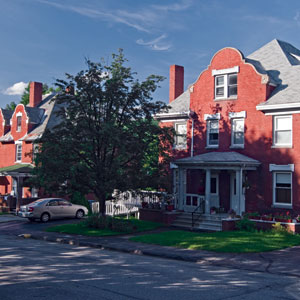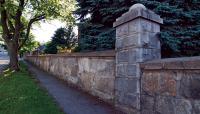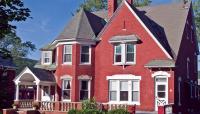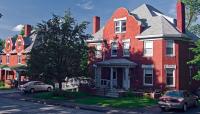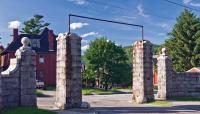Landscape Information
Beginning around 1890, Canadian entrepreneur Hugh Chisholm transformed Rumford into a working-class mill town. In response to strong housing demands, from 1901 to 1902 he built Strathglass Park, a neighborhood of brick duplex rental homes for employees of the Oxford Paper Mill. Chisholm had studied and visited industry housing neighborhoods in the U.S. and overseas and had adopted the European model of raising working-class housing standards in order to cultivate company loyalty.
The four neighborhood streets, aligned with adjacent neighborhoods and running roughly north-south, feature approximately 100 individual lots; each duplex occupies two lots. To distinguish the neighborhood from typical worker housing, Chisholm hired architect Cass Gilbert to design seven different façades with turreted roofs, dormers, and Dutch gables, and included modern conveniences such as city water, steam heat, electricity, in-house bathrooms, and laundry facilities. Each house featured an ivy-covered front entrance and precisely graded slopes on the front lawn, with stairs and walkways connecting to sidewalks and grass esplanades planted with a mix of deciduous street trees. Chisholm also provided neighborhood amenities such as a casino with reading, billiard, and pools rooms and a hall for theater productions.
The neighborhood suffered a period of neglect after the realty company’s closure in 1948 and was listed as one of Maine’s ten most endangered historic properties in 2005, which led to increased awareness of its historic significance and the formation of a property owners’ association. Strathglass Park was listed in the National Register of Historic Places in 1974.




